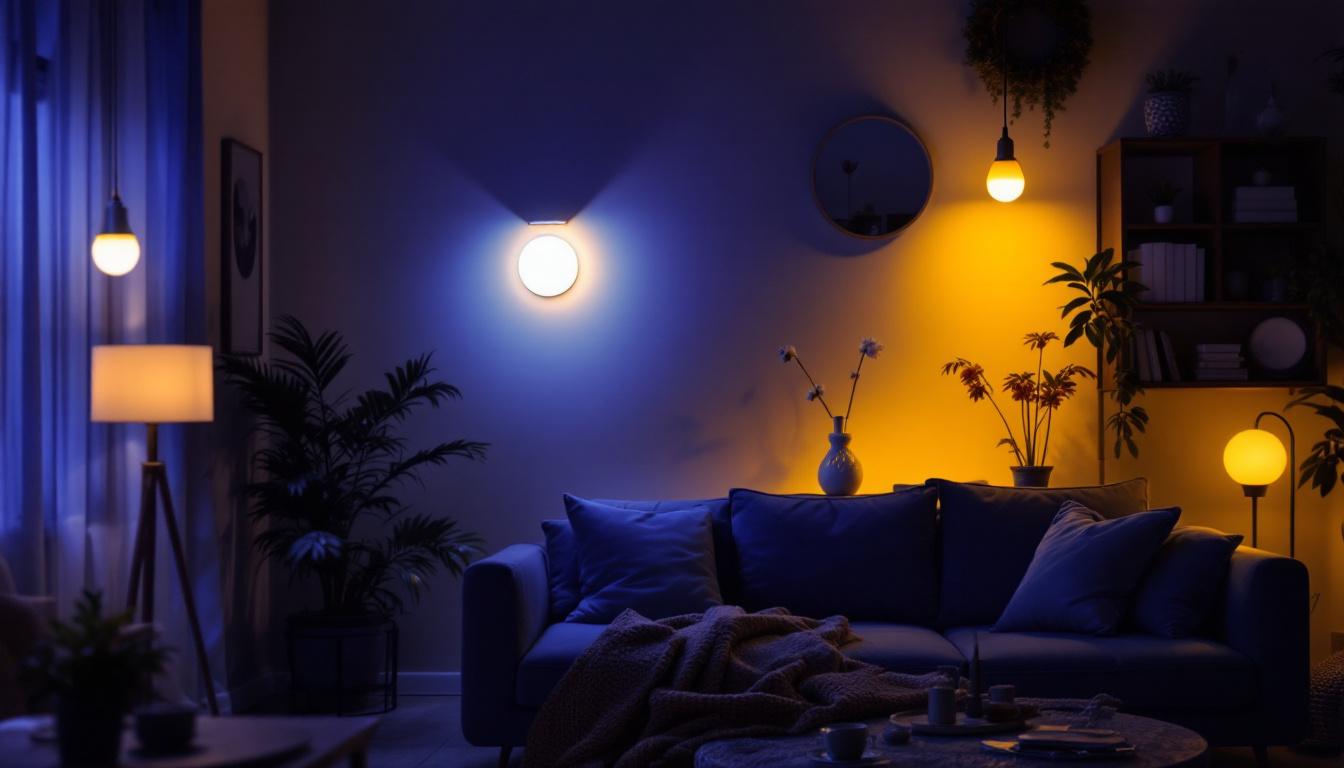
As the demand for energy-efficient lighting solutions continues to rise, LED lights have become a popular choice among homeowners and businesses alike. However, one question that frequently arises among lighting contractors is whether LED lights are dimmable. Understanding the intricacies of LED dimming is crucial for ensuring customer satisfaction and successful project execution. This article delves into the dimming capabilities of LED lights, best practices for installation, and considerations for contractors.
LED technology has evolved significantly over the years, leading to a variety of products on the market. Not all LED lights are created equal, and their dimming capabilities can vary widely. To provide clients with the best options, contractors must grasp the fundamentals of how LED dimming works.
There are primarily two types of dimming methods used with LED lights: phase-cut dimming and 0-10V dimming. Phase-cut dimming, which includes both leading-edge and trailing-edge dimmers, is the most common method. It works by cutting off a portion of the AC waveform, allowing the light output to be adjusted. On the other hand, 0-10V dimming is a more sophisticated method that uses a low-voltage control signal to adjust the brightness, providing smoother transitions and better compatibility with a wider range of LED fixtures.
Understanding these methods is essential for contractors when recommending dimmable LED options to clients. Each method has its advantages and limitations, and the choice may depend on the specific application and desired level of control. For instance, phase-cut dimming is often more cost-effective and easier to install, making it a popular choice for residential applications. In contrast, 0-10V dimming is frequently found in commercial settings where precise lighting control is necessary, such as in conference rooms or art galleries, where the quality of light can significantly affect the ambiance and functionality of the space.
Not all LED lights are compatible with every dimming system. When selecting dimmable LED fixtures, contractors should ensure that both the LED driver and the dimmer switch are compatible. Using an incompatible dimmer can result in flickering, buzzing, or even damage to the LED fixture. It is advisable to consult manufacturer specifications and guidelines to confirm compatibility before installation.
Additionally, using high-quality dimmers specifically designed for LED applications can prevent many common issues. Many manufacturers now offer dimmers that are optimized for LED technology, ensuring better performance and reliability. It’s also worth noting that some dimmers come with advanced features, such as memory settings that allow users to save their preferred brightness levels or remote control capabilities for added convenience. These features can enhance the user experience, making it easier to create the desired atmosphere in any space, whether it be for a cozy movie night at home or a well-lit workspace in an office environment.
To achieve optimal performance and customer satisfaction, contractors should adhere to best practices when installing dimmable LED lights. These practices not only enhance the functionality of the lighting system but also contribute to the longevity of the fixtures.
When selecting dimmers for LED lights, it is crucial to choose those that are specifically labeled as LED-compatible. These dimmers are designed to handle the lower wattage and unique electrical characteristics of LED fixtures. Using standard incandescent dimmers with LED lights can lead to poor performance and potential damage.
Moreover, it is advisable to consider the total wattage load on the dimmer. LED lights consume significantly less power than traditional incandescent bulbs, allowing for more fixtures to be connected to a single dimmer. However, exceeding the dimmer’s rated capacity can lead to overheating and failure. Therefore, calculating the total wattage of all connected fixtures is essential for ensuring safe and effective operation.
After installation, it is vital to test the dimming functionality of the LED lights. Contractors should check for smooth dimming across the entire range, ensuring there are no flickers or abrupt changes in brightness. If issues arise, troubleshooting may involve checking the compatibility of the dimmer and fixtures, as well as inspecting the wiring and connections.
Additionally, educating clients about the proper use of dimmers can help avoid common pitfalls. For instance, clients should be informed about the importance of not exceeding the recommended load and the potential effects of mixing different brands of LED lights and dimmers.
While dimmable LED lights offer numerous benefits, they are not without challenges. Understanding these issues can help contractors prepare for potential problems and provide effective solutions to clients.
One of the most common complaints regarding dimmable LED lights is flickering or buzzing when dimmed. This can occur due to a variety of factors, including incompatible dimmers, poor-quality LED drivers, or even electrical interference. Contractors should be prepared to address these issues by recommending high-quality components and ensuring compatibility between dimmers and fixtures.
In some cases, flickering may be resolved by adjusting the dimmer settings or replacing the dimmer with a more suitable model. It is also important to consider the electrical circuit’s load and ensure that it is not overloaded, as this can exacerbate flickering issues.
Another challenge that may arise with dimmable LED lights is the shift in color temperature as the lights are dimmed. Some LED fixtures may exhibit a warmer or cooler tone when dimmed, which can be undesirable for certain applications. Contractors should inform clients about this potential issue and recommend LED products known for maintaining consistent color temperature across their dimming range.
To mitigate this challenge, selecting high-quality LEDs with stable color performance is essential. Additionally, testing the fixtures in the intended environment before finalizing the installation can help ensure that clients are satisfied with the color quality at various brightness levels.
Effective communication with clients is crucial for ensuring successful dimmable LED installations. Educating clients about the benefits and limitations of dimmable LEDs can lead to better decision-making and increased satisfaction with the final product.
When discussing dimmable LED lights with clients, it is essential to highlight the benefits of using dimmers. Dimming not only enhances the ambiance of a space but also contributes to energy savings and extended bulb life. By allowing users to adjust brightness according to their needs, dimmable LEDs can create a more comfortable and functional environment.
Contractors should also explain how dimming can impact energy consumption. By reducing the light output, clients can lower their electricity bills and decrease their carbon footprint, making dimmable LEDs an environmentally friendly choice.
While dimmable LED lights offer many advantages, it is important to set realistic expectations with clients. Not all LED fixtures will perform identically, and factors such as dimmer compatibility and the quality of the LED driver can significantly affect performance. By being transparent about these variables, contractors can help clients make informed decisions and avoid disappointment.
Additionally, discussing potential limitations, such as flickering or color temperature shifts, can prepare clients for any issues that may arise. Providing solutions and alternatives can further enhance client trust and satisfaction.
The landscape of LED lighting continues to evolve, with advancements in dimming technology paving the way for new possibilities. Staying informed about these trends can help contractors remain competitive and provide cutting-edge solutions to clients.
One of the most exciting developments in LED dimming technology is the rise of smart dimming solutions. These systems allow users to control their lighting remotely through smartphones or voice-activated devices, providing unparalleled convenience and flexibility. Contractors should consider incorporating smart dimming options into their offerings, as they appeal to tech-savvy clients seeking modern solutions.
Smart dimmers often come with features such as scheduling, scene setting, and integration with home automation systems, enhancing the overall user experience. As demand for smart home technology continues to grow, contractors who can provide these solutions are likely to see increased interest from clients.
Another trend to watch is the ongoing advancement in LED driver technology. New drivers are being developed to improve compatibility with a wider range of dimmers and fixtures, reducing the likelihood of issues such as flickering and buzzing. Contractors should stay updated on the latest driver technologies to ensure they can offer the most reliable and effective solutions to their clients.
Moreover, innovations in driver efficiency can lead to improved energy savings and performance, making them an attractive option for contractors looking to provide high-quality installations.
Understanding the dimming capabilities of LED lights is essential for lighting contractors aiming to deliver exceptional service and products to their clients. By familiarizing themselves with the various dimming methods, best practices for installation, and common challenges, contractors can enhance their expertise and ensure successful outcomes.
Effective communication and education are key components of the contractor-client relationship. By setting realistic expectations and highlighting the benefits of dimmable LEDs, contractors can foster trust and satisfaction among their clients.
As the industry continues to evolve, staying informed about emerging trends and technologies will empower contractors to remain competitive and provide innovative solutions. By embracing the future of LED dimming technology, lighting contractors can illuminate the path to success in their projects.
Ready to take your lighting projects to the next level? At LumenWholesale, we specialize in providing lighting contractors with the highest quality, spec-grade LED lighting products at unbeatable wholesale prices. Say goodbye to local distributor markups and hello to superior lighting solutions that meet the strictest industry standards. With our extensive selection, you’re guaranteed to find the perfect dimmable LED options for any application. Plus, with free shipping on bulk orders, you can stock up on premium lighting without any hidden fees. Elevate your lighting game and enjoy the best value in wholesale lighting by visiting LumenWholesale today.

Discover essential tips for lighting contractors to avoid common pitfalls when installing emergency LED lights.

Discover expert insights on how to effectively dim LED lights with ease.

Explore how affordable lighting fixtures are transforming the business landscape for lighting contractors.

Discover why LED shops are a game-changer for lighting contractors.